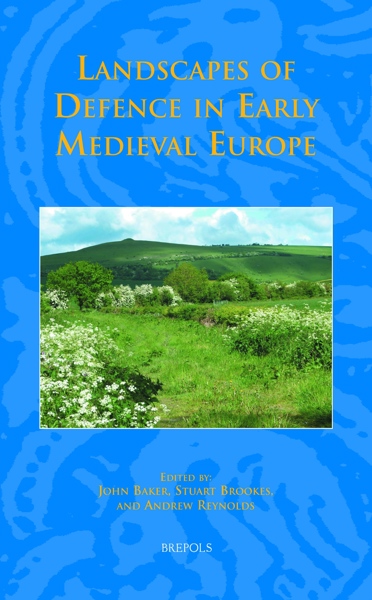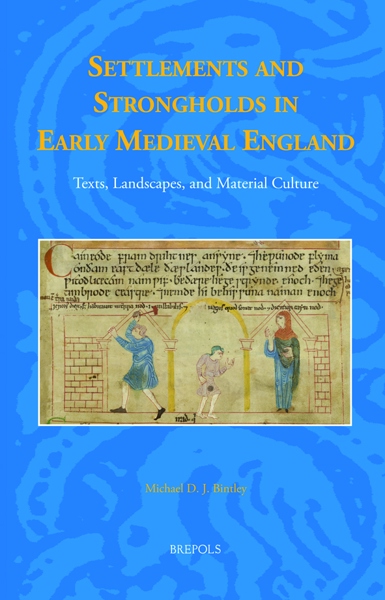
Landscapes of Defence in Early Medieval Europe
John Baker, Stuart Brookes, Andrew Reynolds (eds)
- Pages: xviii + 384 p.
- Size:156 x 234 mm
- Illustrations:65 b/w
- Language(s):English
- Publication Year:2013
- € 120,00 EXCL. VAT RETAIL PRICE
- ISBN: 978-2-503-52956-1
- Hardback
- Available
- € 120,00 EXCL. VAT RETAIL PRICE
- ISBN: 978-2-503-54047-4
- E-book
- Available
"What I found most rewarding in these papers as a group was seeing how the fortification of the landscape in response to increased insecurity in the late 9th/early 10th century resulted in a general consolidation of elite authority and the organisation of territories. Their subsequent role in providing a basis for the growth of urbanism also gives a real sense of the importance these various defended locations had for the later history of medieval northern Europe. (...) there is much to recommend in the volume which is of a generally very high quality." (John Naylor, in: Medieval Archaeology, Vol. 58, 2014, p. 400-401)
"(...) All provide a stimulating overview of their subjects, making one want more." (Jeremy Haslam, in: Landscape History, 35.2, 2014, p. 90-91)
"The book is a most worthy addition to the series of Studies in the Early Middle Ages" (Roger Vella Bonavita, in: Parergon, 31.2, 2014, p. 222-223)
This volume is the result of a conference at University College London in 2007 which addressed the scale and form of civil defences in early medieval Europe, c. 800–1000. Previous work has largely focussed on individual sites or specific categories of evidence. These papers offer new interdisciplinary perspectives driven by a landscape approach. Several contributions focus on civil defence in England around the time of King Alfred the Great, and together provide a new agenda for the study of Anglo-Saxon military landscapes. European case-studies facilitate a comparative approach to local and regional defensive structures and interpretive paradigms. Topics and themes covered include civil defence landscapes, the organization and form of defensive structures, and the relationships and dynamics between social complexity, militarization, and external threats. With papers ranging from England to Spain and Germany to Scandinavia the volume is of relevance to a range of disciplines including archaeology, history, onomastics, geography, and anthropology.
John Baker is Research Associate at the University of Nottingham, Stuart Brookes is Research Associate, and Andrew Reynolds is Professor in Medieval Archaeology, both at the UCL Institute of Archaeology.
Preface
Archaeological Correlates for Anglo‑Saxon Military Activity in Comparative Perspective — Andrew Reynolds
Mapping Anglo-Saxon Civil Defence — Stuart Brookes
The Language of Anglo-Saxon Defence — John Baker
West Saxon Fortifications in the Ninth Century: The Perspective from the Written Sources — Barbara Yorke
Wallingford: Place, Space, and Defence — Neil Christie with Oliver Creighton and Matt Edgeworth
Military and Non-Military Functions of the Anglo-Saxon Burh, c. 878–978 — Gareth Williams
Aspects of Suburban Settlement at Early Urban Centres in England — Andrew Agate
The Costs and Consequences of Anglo-Saxon Civil Defence, 878–1066 — Richard Abels
A Viking Age Landscape of Defence in the Low Countries?: The ringwalburgen in the Dutch Province of Zeeland — Letty ten Harkel
Frankish and Slavic Fortifications in Germany from the Seventh to the Eleventh Centuries — Peter Ettel
The Viking Age Paradox: Continuity and Discontinuity of Fortifications and Defence Works in Eastern Scandinavia — Charlotte Hedenstierna -Jonson, Lena Holmquist , and Michael Olausson
Defensive Sites of the Early Middle Ages in North-West Spain — Juan Antonio Quirós Castillo
Military Stress, Central Power, and Local Response in the County of Castile in the Tenth Century — Julio Escalona




